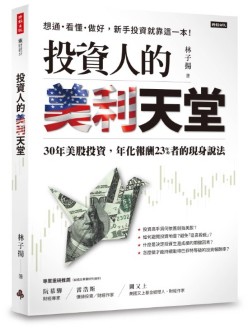The origin of index funds
Before ETF Regulations and Restrictions, let’s talk about where did index funds come from?
In 1993, the U.S. SEC first approved the exemption order for the establishment of ETFs in accordance with the provisions of the U.S. 1940 Investment Company Act for investment companies. Then in the same year, State Street issued the world’s first ETF in the United States with the S&P 500 as the investment target. SPDR S&P 500 ETF (ticker: SPY).
Index Fund Regulations
According to the requirements of the U.S. Investment Company Act of 1940, index funds need to follow the “25/5/50” restriction: a single stock cannot hold more than 25% of the total fund, and the holding ratio exceeds 5% at the same time. The combined total weight of the targets cannot exceed 50%.
The real world
Taking the Russell 1000 Index as an example, as of August 2024, the top ten weights in the index account for 34% of the entire index. Although it has not reached the “25/5/50” limit, it is already the most exaggerated concentration level in the 45-year history of the index.
Catherine Yoshimoto, director of product management at FTSE Russell, explained that the company already has a set of indexes that limit weights and is currently considering whether it is necessary to further limit weights for a series of standard indexes. Many clients are urging the company to put limits on the Russell 1000 Growth Index.
In the plan proposed by Russell, the upper threshold is changed to “20/4.5/48”. For comparison, Nasdaq’s requirement is “24/4.5/48” and S&P’s requirement is “24/4.8/50”.
What’s the reason?
Of course, the original intention of these index fund regulations is to limit the concentration of holdings, but it still cannot completely change the impact of the “ups and downs of giants” like Huida on index funds. There are currently three companies in the United States with a market value of more than 3 trillion US dollars, as well as Alphabet with a market value of more than 2 trillion US dollars, and Amazon with a market value of nearly 1.9 trillion US dollars.
In order to avoid reaching the 50% weight limit, many index funds have such an operation: when the overall proportion of a series of heavyweight stocks exceeds the 50% limit, the positions of the stocks with the lowest market capitalization will be reduced to meet regulatory requirements.
Capital crowding out effect
Because the proportion of a few very large market capitalization stocks in various market indexes and ETFs is too high, the trends of market indexes and ETFs are almost linked to these few very large market capitalization stocks. In other words, they pretty much determine the direction of market indices and ETFs.
What’s more serious is that there are currently a large number of automated programmed transactions in the market that are directly linked to the rise and fall of major market indexes. As long as these few large-capitalization stocks surge or plummet, these automated programmed transactions will be triggered, and huge amounts of buying and selling will occur simultaneously. The result, of course, is to intensify the rise and fall of the market and the broader stock market.
In the global stock market crash on Black Monday, October 19, 1987, the Dow Jones Industrial Average closed plummeting 22.61% that day. Global stock markets plummeted, led by the Dow Jones Industrial Average, triggering panic in the financial market and the ensuing 1980s. the end of the economic recession. Later research pointed out that the outpouring of automated programmed trading was one of the culprits that caused the day’s immeasurable decline.
Side effect
When Huida became the global stock king, the fund increased the weight of Huida’s position from 4.5% to 21% in order to meet the position limit requirements, and then sold tens of billions of dollars of Apple stock, reducing its position ratio from 22%. to 4.8%. According to the market value in mid-September 2024: Apple is 3.4 trillion, Microsoft is 3.2 trillion, and Huida is close to 3 trillion. When the index is rebalanced in October, the fund will have to buy back Apple shares, and then sell Microsoft or Microsoft depending on the situation. Huida.
To put it simply, the fund has to sell stocks at low prices and then buy them at high prices.

Related articles
- “Consequences of Index Fund and ETF Regulations and Restrictions“
- “Changes in company insider and institution shareholding ratio“
- “Investors turn to passive investment funds ETF and abandoning active investment funds“
- “Pros and cons of employee stock options as compensation“
- “Insider trading and regulations on U.S. stocks“
- “The pros and cons of CEO returning, Boomerang CEO“
- “The more shares CEO owns, the higher stock return
- “Founder-CEO firms stock shown better performance“
Disclaimer
- The content of this site is the author’s personal opinions and is for reference only. I am not responsible for the correctness, opinions, and immediacy of the content and information of the article. Readers must make their own judgments.
- I shall not be liable for any damages or other legal liabilities for the direct or indirect losses caused by the readers’ direct or indirect reliance on and reference to the information on this site, or all the responsibilities arising therefrom, as a result of any investment behavior.
